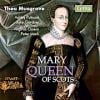
Times are changing in concert life at the Los Angeles Philharmonic’s venerable and venerated summer hangout, the Hollywood Bowl. Look at the schedule for summer 2021 and behold the vastly increased participation of female composers, conductors, and soloists; Black composers, conductors, and soloists; and Latinx composers, conductors, and soloists. This cannot be an accident of timing and scheduling — not from an orchestra that has a recurring Power to the People! festival and a Pan-American Initiative finally underway.
Tuesday night’s concert (July 20), to cite the most recent example of inclusion, contained the U.S. premiere of Thea Musgrave’s Trumpet Concerto from 2019, co-commissioned by the Philharmonic along with the Cheltenham Music Festival and the City of Birmingham Symphony Orchestra, for British trumpet star Alison Balsom. The conductor was Tianyi Lu, a Shanghai native who relocated to New Zealand with her family and has been working her way up the ranks through the orchestras of northern Europe and Australia, as well as serving as an LA Phil Dudamel Fellow in 2017–2018. She is currently the female conductor in residence at Welsh National Opera and, in the spirit of her mentor, is involved in the equivalent of El Sistema in New Zealand.
It’s possible that Musgrave’s music, which never fit comfortably into any trendy categories in this century or the last, will be benefiting from the increased attention that female composers are getting. Musgrave, now 93, has longevity going for her; she is still composing at her exalted age, and there she was in the Bowl’s lower boxes taking in the performance and basking in the ovation after.
Musgrave’s previous concertos for clarinet, bass clarinet, and horn are quite similar in language (a turbulent style perched somewhere between tonality and atonality) and structure (continuously played music in multiple movements lasting some 20 to 25 minutes). The new Trumpet Concerto, inspired by a walk-through of an exhibition of the nature paintings of Scottish artist Victoria Crowe, retains the structure yet tamps down the turbulence, concentrating on producing a singing, smooth, even tone from the soloist. Musgrave even addresses her Scottish heritage in a pastoral interlude that turns out to be an orchestrated folk song from the old country, “The Bonnie Earl of Moray.”

Another thing the concerto shares with some of Musgrave’s other instrumental scores is theatricality, having Balsom engage in increasingly involved duets with soloists from the orchestra. The piece ended quietly with Balsom exchanging sweet closing remarks in song with a second solo trumpeter stationed just in front of the wings to the extreme right. After the ovation died down, Balsom took off on a lightning-fast, precisely articulated rundown of the third movement of the Hummel Trumpet Concerto as an encore — a dazzling party piece.
The giant video screens were a big help, displaying the paintings that inspired Musgrave’s music, focusing in on some of the dialogues and confrontations between Balsom’s trumpet and the orchestral instruments, even producing a few laughs when principal cellist Robert deMaine shook his head in mock frustration. It would have been enlightening to do the same for the companion piece after intermission, Mussorgsky/Ravel’s Pictures at an Exhibition — another musical walk-through an art gallery. The Bowl could have splashed some of the surviving paintings of Viktor Hartmann that inspired Mussorgsky on the big screen, thus providing a link between the new and old music. A missed opportunity.

The performance of Pictures can be succinctly described as nothing out of the ordinary. Lu proved to be a graceful, willowy figure on the podium, but it sounded like she could do little more on short rehearsal time than enforce standard tempos (save for a slightly broad-paced “The Hut on Fowl’s Legs”) and make sure that “The Great Gate of Kiev” finished things off in sufficiently grand style.
Oh yes, there was a world premiere, too — a four-minute Fanfare for a New Beginning by Ricardo Molla, four minutes of rather choppy-sounding cinematic rhetoric for brass and percussion whose best moments were in the sparkling opening. Lacking any enlightenment from the digital program — no more printed programs this summer, or maybe ever? — I would guess that the “new beginning” refers to the reopening of concert life after a pandemic. But with the Delta variant now looming over the scene, could it be a premature victory lap?




